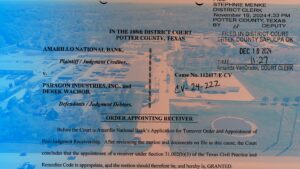Friday night, February 21st, my sister-in-law and I attended a lecture by Dr. Sally Roesch Wagner, a preeminent scholar on the subject of women’s history. She was speaking in Tulsa to celebrate the weekend’s activities in conjunction with the 100th anniversary of the passing of the 19th Amendment, re-establishing American women’s right to vote, which was ratified on August 26, 1920.
This year is the anniversary of codifying into the Constitution a woman’s right to vote in all elections, school board, city, county and state questions, and this year, the election to choose the President of the United States.
I didn’t know until then that women in colonial America could vote and did vote. This right, responsibility, and privilege was summarily wrested away from them when the new Constitution was written. Truthfully, there was not much call for universal suffrage at the time.
The Constitution applied to white males over the age of 21, who owned the required amount of property. One of our cherished Founding Fathers, John Adams, the 2nd President, stated:
“Depend upon it, sir, it is dangerous to open [such a] source of controversy and altercation, as would be opened by attempting to [change] the qualifications of voters. There will be no end of it. New claims will arise. Women will demand a vote. Lads from 12 to 21 will think their rights not enough attended to, and every man, who has not a [dime], will demand an equal voice…”
John Adams
That was the aristocratic view of our founders who thought of their wives, slaves, children, and employees as their belongings, like a compliant farm animal or favorite chair.
Adams’ wife, Abigail, our first foremother, famously asked her husband to “remember the ladies” in any new laws he may create. Adams treated this idea as a joke, calling her “saucy” to imagine that she could have a voice. Besides, she owned no property.
In the colonies, up to 75 percent of the adult males were qualified as voters. After the Constitution was written, states created laws that eliminated everyone under the age of 21, all slaves, all women, most Jews and Catholics, plus those men too poor to be landowners, so the colonial voting bloc was reduced to about 10 percent to 20 percent of the total population. Only 6 percent voted for George Washington.
In New Jersey, an apparently accidental phrase in the new state constitution permitted women to vote in substantial numbers for the first time in American history. In 1776, “all inhabitants” who were of legal age (21), owned property worth 50 English pounds and resided in a county for at least one year could vote. In 1790, their document said “he or she” could vote. Records don’t show how many women actually voted.
In New York, white women were inspired that Iroquois women ran their tribal government, deciding when to go to war and torturing their enemies, for instance. They chose the chiefs.
In Cherokee society, women were equal to men and some sat on war councils with them. In 1736, this situation moved a prominent man to accuse the Cherokee of having a “petticoat government” (like that’s a bad thing).
In 1848, abolitionists and women’s suffrage groups met in Seneca Falls, New York, for the first international convention to gain suffrage for women. They created a “Declaration of Sentiments” listing grievances and demanding the right to vote. One sentence reflected the Declaration of Independence: “We hold these truths to be self-evident: that all men and women are created equal.” It created an uproar.
For the next 80 years, many women marched, rioted, lobbied, went on hunger strikes, and wrote mountains of letters, newspaper articles, and books trying to attain their goal: the right to vote for half the population of their country. The government, their fathers and brothers, their husbands, even their sons reacted, often violently. They were arrested, disrespected, cursed, beaten, starved, raped, divorced, and sent to mental institutions in punishment for the radical “anti-family,” “unfeminine,” “man-hating” views of these “truly dangerous women.”
Several names of these activist foremothers come to mind: Susan B. Anthony, Elizabeth Cady Stanton, Jane Adams, Ida B. Wells, Helen Keller, Lucy Stone, Carrie Chapman Catt, Matilda Joslyn Gage, Sojourner Truth (a former slave), Amelia Bloomer, Margaret Sanger, Olympia Brown, Juliet Ward Howe, Lydia Taft (President Taft’s daughter), Nellie Tayloe Ross, Alice Paul, and Victoria Woodhull (first woman candidate for President).
Many prominent male writers, journalists, and other progressive thinkers of the day, including Henry Browne Blackwell, Lucy Stone’s husband, were also in support of, and instrumental in, achieving the vote for women.
Stepping stones to women’s freedom to vote included the 14th and 15th Amendments to the Constitution. The 14th Amendment, signed in 1868, gave freed slaves and all black men and women citizenship in the United States, but not the right to vote.
The 15th, signed two years later, gave African-American men the right to vote. Many white suffragists were outraged that illiterate, poor blacks were given the vote before educated, well-to-do white women. This racism caused a rift in the movement.
The states have the right to run their elections in their own way. This led to poll taxes, literacy tests, intimidation, and violence at the polls. The “Grandfather Clause,” signed in 1896, kept former slaves and their descendants from voting in several southern states. “Jim Crow’’ laws (and other similar laws) persist today to prevent or discourage voting by minorities (and the women majority). These include having to have a street address, demanding an identification card other than a voting registration card, difficulty accessing for handicapped citizens, voting on Tuesdays instead of a weekend (or over the course of a week), having extremely limited polling locations, and culling the rolls.
Many states wanted to limit suffrage, but the trend was toward expanding the right to vote. It took another fifty years of working, marching, writing, and arguing, for the 19th Amendment to be signed, on August 26th, 1920. Twenty states and territories, including Oklahoma, allowed women to vote prior to this date (1918).
Today, men and women—citizens—of several US territories such as Puerto Rico, Guam, and the US Virgin Islands pay federal taxes (and serve in the military at much higher rates compared to the US general population), but don’t have the right to vote in federal elections. Six million taxpaying Americans (men and women) with felony convictions were barred from voting in the 2018 midterms due to state-level felon disenfranchisement laws.
These laws should be changed. All citizens should be allowed to vote in all elections. Every vote should count. It is the basis for our powerful, unique form of government which is “government of the people, by the people, for the people.”









